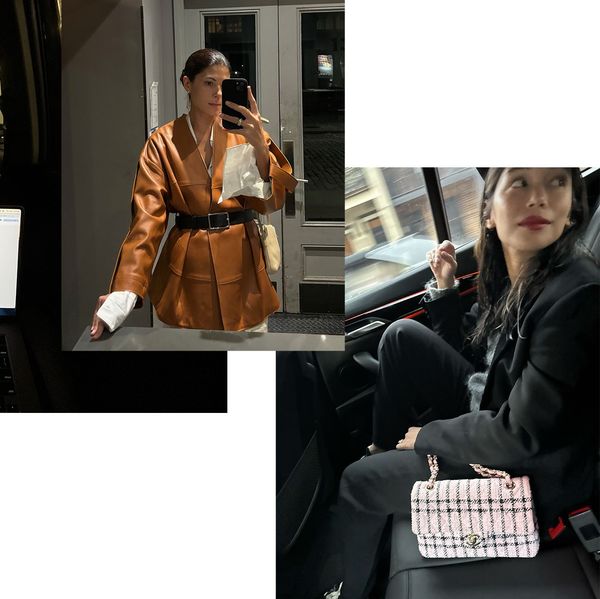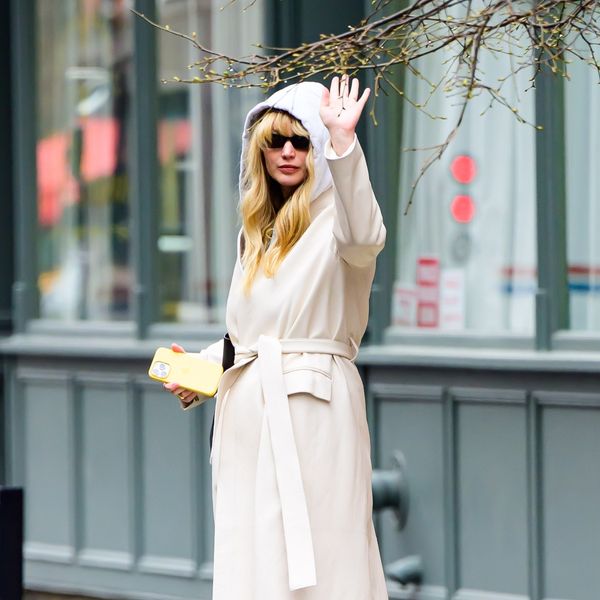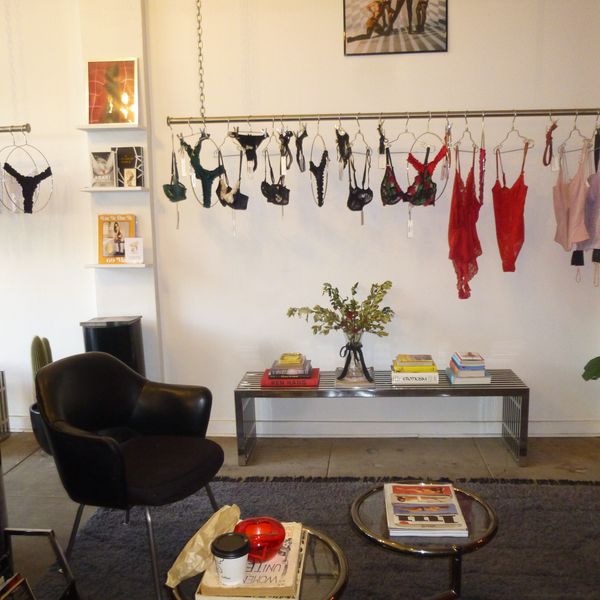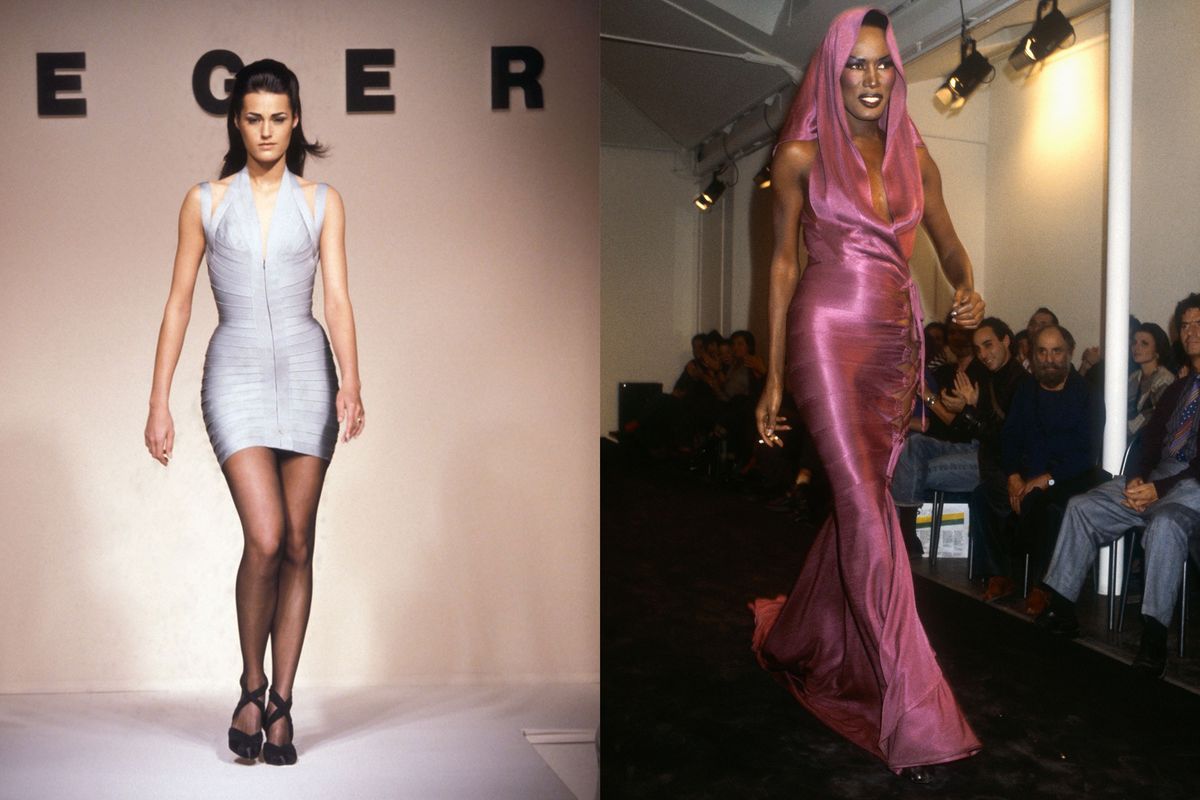
What goes around comes around, and this season, the latest (partially unexpected) resurgence is the bandage dress—at least, according to media uproar.
It’s been 15 years since the impossibly tight dress had its last renaissance, which, during its peak in the mid 2000s, had countless celebrities opting for Hervé Léger’s famous bodycon silhouette as their go-to red carpet looks. Throughout the years, the bandage dress has become synonymous with particular body culture movements and economic pressure, serving as an indicator of the state of the world and the way we’re responding to physical trends.
The bandage dress was first introduced by Azzedine Alaïa, despite popular belief that Hervé Léger created what the brand is now best known for. Alaïa showed the first bandage dresses on the runway in the early 1980s, offering an alternative silhouette to the ‘80s power dressing that was all the rage at that time as women claimed their places within the workforce.
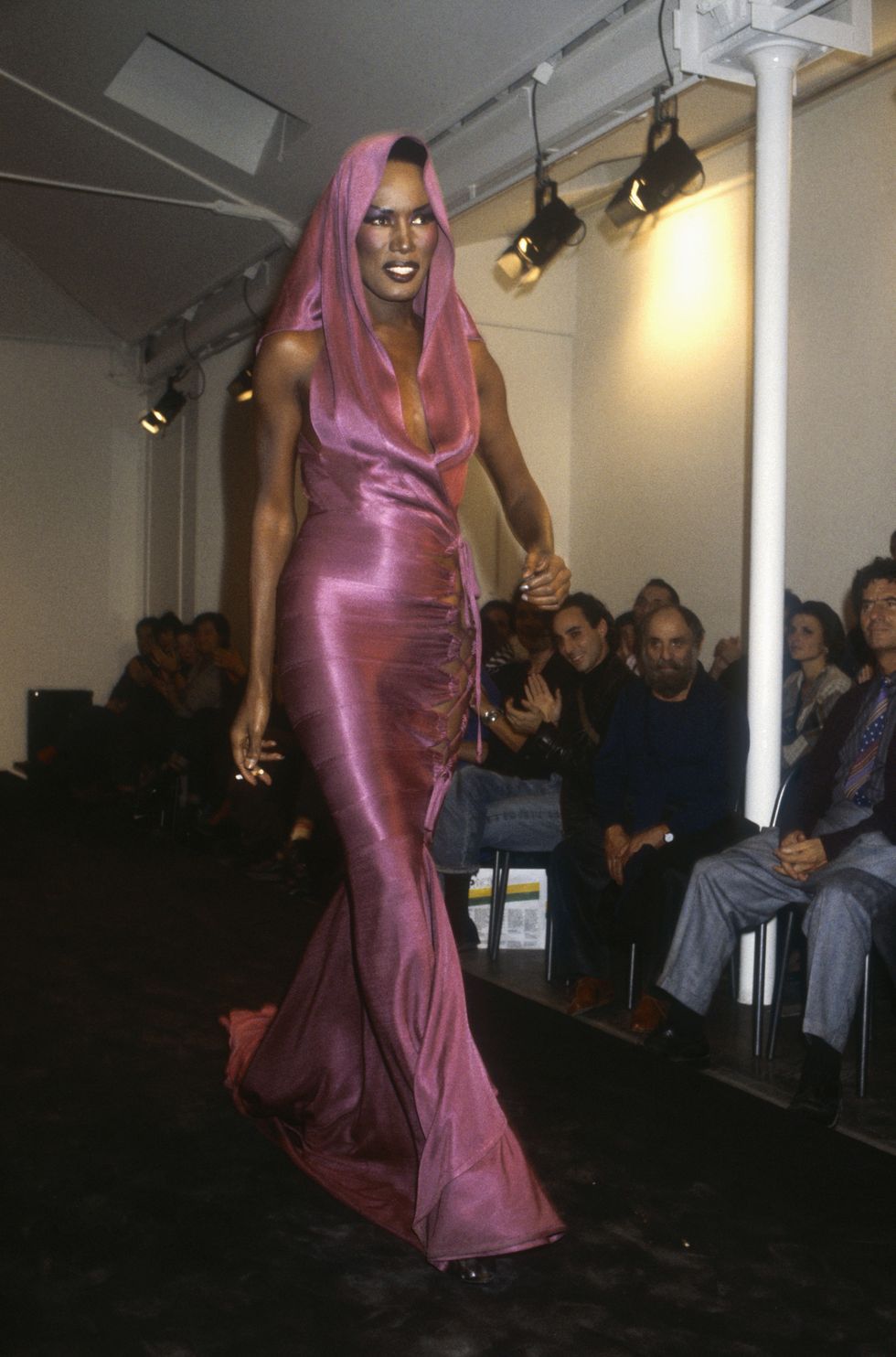
Alaïa 1986 Spring/Summer Haute Couture
Getty Images
Alaïa’s versions were jewel-toned gowns and skirts crafted from shimmery viscose that skimmed the body, rather than pulling it in as Léger’s did in the early 1990s. They swiftly became a fixture of the supermodel wardrobe—a dress that hugged and cinched all of the right places with a luxury lean. With thin-ness on the rise, the bandage dress served as the ultimate barometer of worthiness.
There is no avoiding the correlation between the bandage dress renaissance and its proximity to thinness. In the age of Ozempic and other GLP-1 weight-loss drugs, coupled with rampant diet culture on social media, it makes sense why bandage dresses are becoming re-glorified in the trend cycle once again: because the bodies that society has deemed permissible to “fit into” them are also glorified in the trend cycle again.
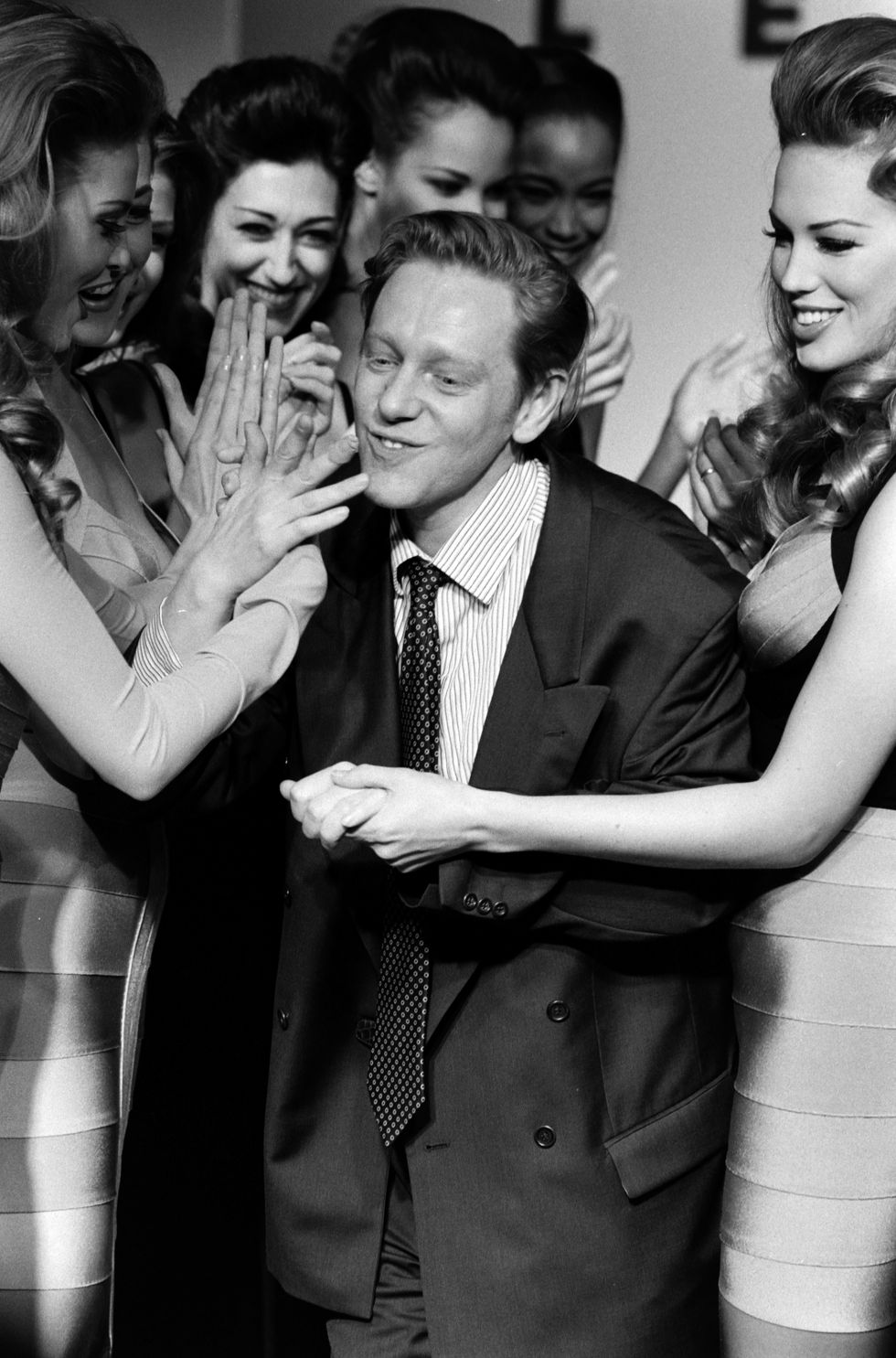
Hervé Léger Fall/Winter 1992
Getty Images
But are they really back? Is the noise generated online just that—noise? This year marks 40 years of Hervé Léger in September, and the brand is embracing the bandage silhouette with open arms again. So is British retailer House of CB, which semi-successfully brought the bandage dress to a younger consumer in the 2010s before pivoting to more whimsical silhouettes.
Now, for their 15-year anniversary, the London-based retailer has released an anniversary collection of 15 bandage dresses in various colors and sizes.As is always the case in our digital age, TikTok has played a lead role in making it bandage dresses appear resurgent, where countless content creators are doing bandage dress hauls, skeptical try-ons, and posing in videos proclaiming that they are “back.” But while celebrities like Kaia Gerber and Hailey Bieber are already indulging in the trend, it may not reflect a reality for the mass consumer—yet.
TikToker Sophie Silva posted a video last month trying on three dresses from House of CB’s bandage dress collection, garnering over 3 million views and over 700 comments, all with mixed feelings about the trend. Many top comments pointed out that while the dresses look great, they felt they only catered to a certain body type.
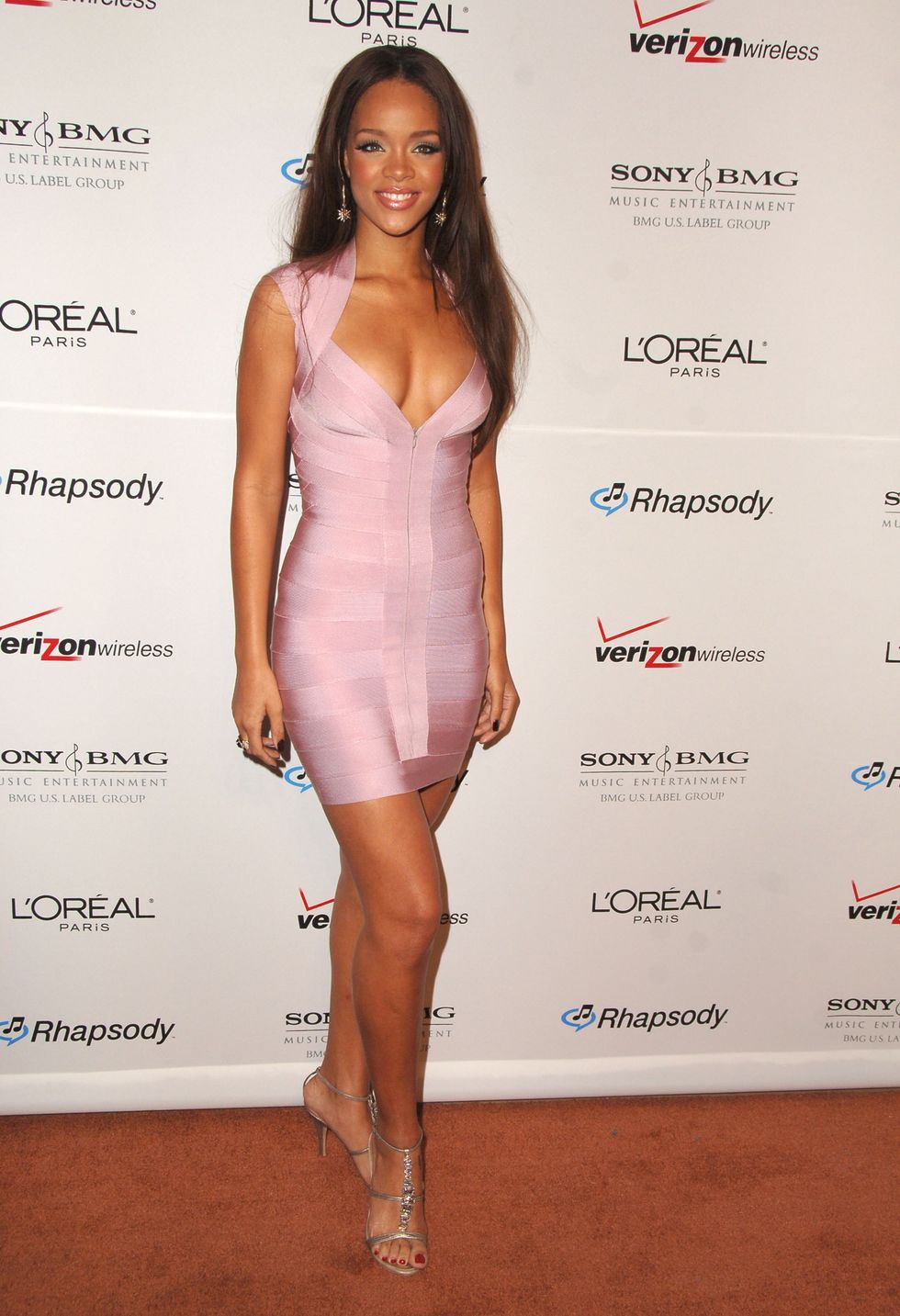
Rihanna at a pre-Grammy awards party in 2007 wearing Hervé Léger.
Getty Images
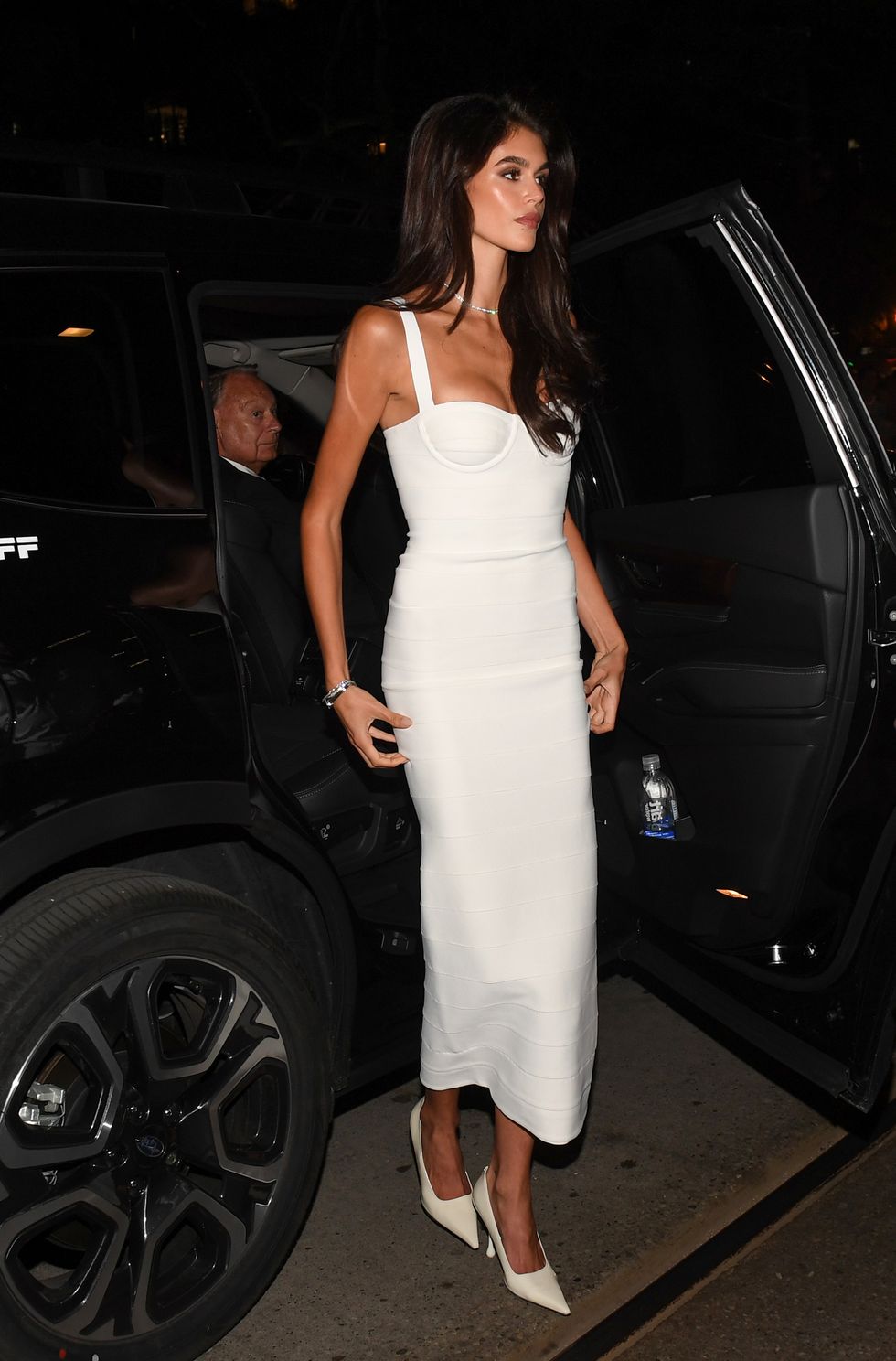
Kaia Gerber at the Toronto Film Festival in 2024 wearing Hervé Léger.
Getty Images
“The dress still carries traces of a past that celebrated thin, toned bodies as the ideal. But Gen Z is remixing that. We’re seeing curvier bodies, nonbinary wearers, and size-inclusive reimaginings of the silhouette. The intention has shifted,” fashion psychologist Jennifer Heinen told WWD. “Gen Z’s version of the bandage dress isn’t about aesthetic obedience. It’s a visual paradox: compression that doesn’t conform, sexiness without apology. When styled with visible softness—fuller bodies, body hair, flat shoes—it becomes a disruption, not a reinforcement.”
While this may be true, the overwhelming examples of the bandage dress trend in 2025 are carried out by thin, predominantly white women who are purposefully emulating a similar energy from the mid 2000s, spurred on by our insatiable desire to tap nostalgia. But while search interest for Hervé Léger dresses has increased 74% and search interest for bandage dresses has increased 49% since April 2021, according to a 2024 Vogue article, the silhouette remains a niche trend that has only surfaced on celebrity wearers a handful of times since this data was recorded.
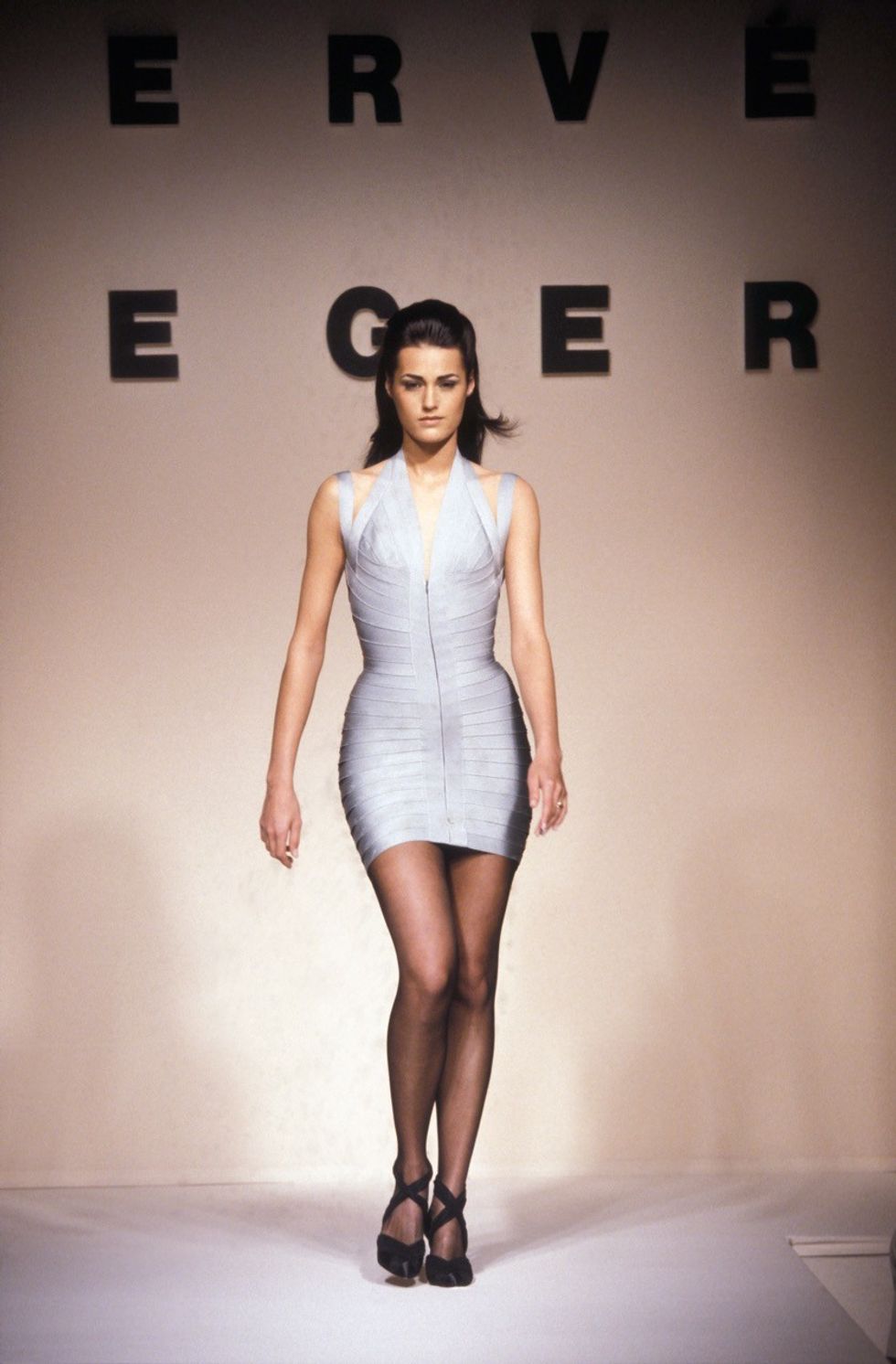
Hervé Léger Fall/Winter 1993.
Getty Images
When speaking to the New York Times about the revival of the silhouette, Katy Lubin, a spokeswoman for the fashion search engine Lyst, said that actual data is not consistent with the level of consumption versus the way bandage dresses are being celebrated online. “Overall volume is still pretty low, although we have seen demand increase by 2 percent in the last three months,” Lubin told the NYT.
When you compare this to the undeniable impact of the bandage dress in the early-mid 2000s, it’s safe to assume bandage dresses won’t be taking over again—at least not quite like the internet is making out.

